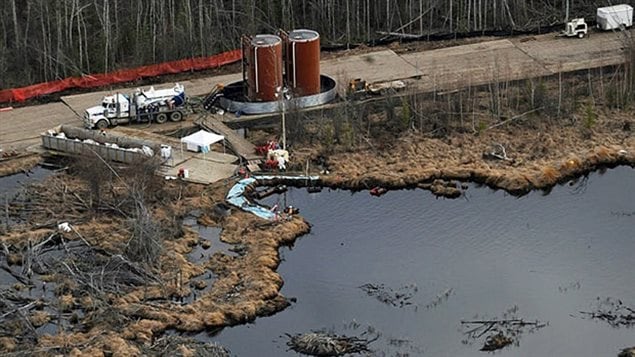In her new book, Boiling Point: Government neglect, corporate abuse, and Canada’s water crisis” Maude Barlow details the variety of situations that threaten Canada’s and the world’s supply and access to fresh water.
“The water crisis is at our door here in Canada. All the issues we thought so far away are upon us now,” writes Barlow in Boiling Point. “It is time to abandon our false beliefs that Canada has unlimited supplies of water, that Canadians have taken care of this water heritage and one another or that we still have lots of time to do so. We need a strong, national plan of action based on a new water ethic that puts water protection and water justice at the heart of all our policies and laws.”
Ms Barlow is national chairperson of the Council of Canadians, a non-profit advocacy group for the environment, human rights and democracy
Listen
In this segment she talks about extractive industries such as oil, gas, and mining which use vast quantities of fresh water and leave most of it contaminated with toxic chemicals and unusable for centuries. These are stored in huge tailings ponds which can never be released.
But they are hazards either from breaching or leaching their toxic waste back into the environement. She cites environmental scientist David Schindler who says the 170 sq km of tailings ponds in the oil sands area of Alberta leach 11 million litres of contaminated water every day.
While mining presents it’s problems of toxic waste, oil production also presents vast problems not only from the vast amount of water it consumes and which can’t be put back, but in the transport of oil product, which has had litany of accidents contaminating vast areas.
Other figures worth noting (partial list)
April 2011-some 4.5 million litres of crude leaked near the First Nations community of Little Buffalo Alberta, into beaver ponds and muskeg
June 2012 about 500,000 litres sour crude leaked into a creek flowing into Red River north of Calgary
June 2012 pumping station failure led to 230,000 litres of crude leaking north of Edmonton,

2014- industry reports say there 122 oil and gas spills and releases from pipelines in 2014
July 2015: 5-million litres of bitumen waste water leaked from a one year old Nexen pipeline south of Ft McMurray

July 2016- Husky pipeline of oils leaked about 250,000 litres into the North Saskatchewan River.
Water loss due to fracking in Alberta was 17 billion litres.
Every year, global mining activity uses 9 trillion litres of water, as much as is used by the entire country of Malaysia with 30 million people. And every year, mining dumps 180 million tonnes of hazardous waste into the water. One of the world’s 4 worst dumpers is the Wabush/Scully mine in Labrador.
With 4,412 active and abandoned mine sites and 5,000 recorded mine hazards, Ontario now ranks highest for environmental liability in the mining sector and it is the only province in Canada that does not require environmental assessments before mines are developed.







For reasons beyond our control, and for an undetermined period of time, our comment section is now closed. However, our social networks remain open to your contributions.